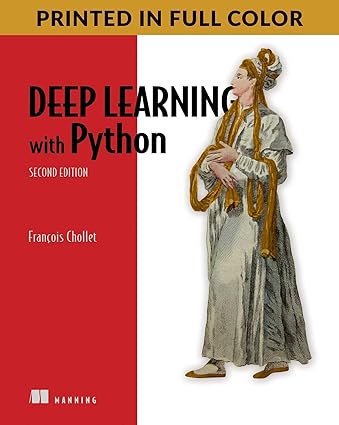White Paper: Deep Learning with Python, Second Edition
1. Introduction
Deep learning, a subset of machine learning, has revolutionized various industries by enabling computers to learn complex patterns from massive datasets. Deep Learning with Python, Second Edition by François Chollet offers a comprehensive guide to understanding and implementing deep learning techniques using Python and the Keras library. This white paper will delve into the key concepts, practical applications, and significance of this book in the field of artificial intelligence.
2. Key Concepts and Techniques
- Neural Networks: The foundational building block of deep learning, neural networks are inspired by the human brain's structure and function. The book explores various types of neural networks, including feedforward neural networks, convolutional neural networks (CNNs), recurrent neural networks (RNNs),
- Deep Learning
- Computer Vision: Deep learning has significantly advanced computer vision tasks such as image classification, object detection, and image segmentation. The book provides practical examples and techniques for building and training deep learning models for these tasks.
- Natural Language Processing (NLP): Deep learning has revolutionized NLP, enabling machines to understand and generate human language. The book covers topics like text classification, sentiment analysis, machine translation, and text generation.
- Time Series Analysis: Deep learning can be applied to analyze time series data, such as stock prices, weather patterns, and sensor readings. The book explores techniques for forecasting future values and detecting anomalies in time series data.
3. Practical Applications
- Healthcare: Deep learning has the potential to revolutionize healthcare by enabling early disease diagnosis, drug discovery, and personalized medicine.
- Autonomous Vehicles: Self-driving cars rely on deep learning to perceive their surroundings, make decisions, and navigate safely.
- Finance: Deep learning can be used for algorithmic trading, fraud detection, and risk assessment in the financial industry.
- Retail: Deep learning can improve customer experience, optimize inventory management, and personalize marketing campaigns.
4. Significance of the Book
- Clear and Concise Explanations: The book provides clear and concise explanations of complex concepts, making it accessible to both beginners and experienced practitioners.
- Practical Examples: Numerous practical examples and code snippets demonstrate how to implement deep learning techniques using Python and Keras.
- Hands-On Approach: The book encourages readers to experiment with different techniques and build their own deep learning models.
- Up-to-Date Content: The second edition incorporates the latest advancements in deep learning, including cutting-edge techniques and best practices.
5. Conclusion
Deep Learning with Python, Second Edition is an invaluable resource for anyone interested in learning and applying deep learning techniques. By providing a comprehensive and practical approach, the book empowers readers to harness the power of deep learning to solve real-world problems and drive innovation.
Reference List
- Chollet, F. (2021). Deep Learning with Python, Second Edition. Manning Publications Co.



